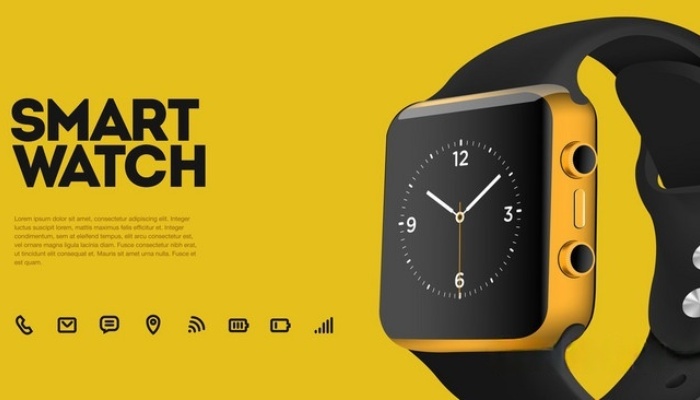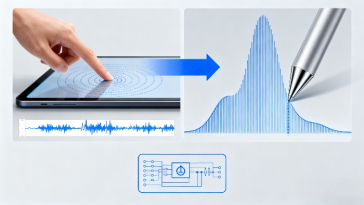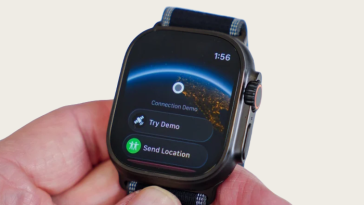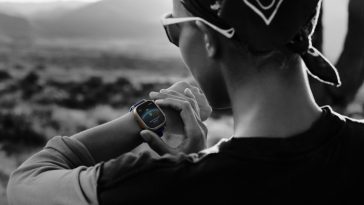1. The Evolution of Smartwatch Functions
Smartwatches have undergone a remarkable transformation since their inception. The earliest models from the 1970s, such as the Hamilton Pulsar, were limited to basic digital timekeeping with LED displays. By the 1980s, tech pioneers like Seiko began integrating simple data storage and calculator functions, marking the first steps into intelligent wearables. The 1990s and early 2000s saw further innovation with devices like the Timex Datalink and IBM’s WatchPad, introducing wireless data transfer, touch displays, and basic connectivity.
The real leap came post-2010 with devices like Pebble, Samsung’s Galaxy Gear, and, most notably, the Apple Watch. These modern watches combine rich health tracking, smartphone integration, contactless payment, and even standalone cellular functions. Today’s smartwatches have shifted from mere timepieces to comprehensive digital companions for health, fitness, and communication.1
2. Health Monitoring Features: Accuracy and Scientific Algorithms
Heart Rate & ECG
Health monitoring sits at the core of current smartwatch functionality. Heart rate tracking has evolved rapidly, and ECG (electrocardiogram) functions now enable detection of serious heart conditions. The Apple Watch’s ECG feature, for example, demonstrates high diagnostic accuracy for atrial fibrillation (AF), with multiple clinical studies showing pooled sensitivity around 94.8% and specificity of 95% versus standard ECG devices. Its irregular rhythm notification feature has lower sensitivity but very high specificity, while the manual ECG capture achieves near-perfect concordance with clinical-grade ECGs.2
“The Apple Watch ECG carries high accuracy in detecting atrial fibrillation, providing a convenient diagnostic option for patients”.2
Blood Oxygen and Sleep Monitoring
Smartwatch blood oxygen sensors (SpO2), like those on Apple Watch Series 7 and Garmin, generally display a moderate correlation to clinical-grade devices. Recent research highlights that the Apple Watch had the largest percentage of readings within the reference range, but it also overestimates values more than other brands. Garmin was more likely to underestimate readings. While pulse oximetry is useful for daily health management—especially in chronic conditions like COPD—these measurements are best used for tracking trends rather than diagnosing disease due to moderate error margins.3
“A moderate correlation was found between smart watch and blood gas SpO2 measurements […] smart watches are really smart … COPD patients can use smart watches to measure SpO2 levels in their daily lives by consulting their doctors”.3
Sleep tracking also shows good usability, but accuracy can be impacted by skin tone and sensor placement, with lighter skin usually resulting in more precise readings.
3. Exercise Analysis: Sports Mode Precision
Advanced running watches like the Garmin Forerunner series bring scientific rigor to exercise analysis. These devices automatically record metrics such as cadence (steps per minute) and ground contact time (the millisecond duration each foot spends on the ground), which are crucial for monitoring and improving running form and injury risk. Elite runners often exhibit ground contact times below 200ms; for recreational runners, these watches offer clear feedback and suggested improvements for symmetry and form.4
“Ground contact time balance measures your running symmetry […] elite runners tend to have quick and balanced strides”.4
Running dynamics like ground contact time, cadence, and symmetry are quantitative, personalized indicators, helping athletes analyze and enhance performance.
4. Smart Interaction: Voice Control and Everyday Usability
Modern smartwatches offer a seamless, accurate voice interaction experience. Advances in speech recognition enable high fluency and accuracy even in noisy environments, with recent AI-driven models achieving F1 scores above 83% for real-world conversation detection and command recognition on actual consumer devices. Optimizations for power efficiency and contextual cues further improve usability.7
“Our framework achieves an 83.2% F1 score for detecting user conversations […] in real time with low latency and optimized power consumption”.5
These features allow users to send messages, set reminders, control smart home devices, and more, directly from their wrist, making daily routines more efficient and hands-free.
5. Real-Life Experience & Practical Value
- Daily Health Management: Accurate heart rate and ECG monitoring enable early recognition of cardiac anomalies, offering peace of mind and improving long-term health outcomes.
- Fitness Improvement: Detailed sports mode feedback empowers users to optimize workout routines, prevent injury, and track progress with greater precision.
- Lifestyle Enhancement: Voice interaction and notification syncing streamline everyday tasks, allowing instant replies and hands-free control at home, at work, or during workouts.
- Medical Relevance: While smartwatch data should not replace clinical diagnostics, its convenience and scientific grounding make it valuable for preliminary screening and ongoing wellness monitoring.
Conclusion
Smartwatches have evolved from simple wrist-worn timers to indispensable personal health, fitness, and productivity tools. Cutting-edge health monitoring, scientifically validated sports analytics, and fluent smart interaction combine to shape the growing impact of smartwatches in daily life. As both accuracy and utility continue to improve, their potential for transforming health and lifestyle appears limitless.
- https://vositone.com/smartwatches-evolution-history.html
- https://pubmed.ncbi.nlm.nih.gov/39886315/
- https://pmc.ncbi.nlm.nih.gov/articles/PMC12085124/
- https://www8.garmin.com/manuals/webhelp/GUID-676967A0-1B23-4384-9BC9-76F3D643F1C8/EN-US/GUID-62A09512-518A-424A-8491-FE2B80CD2091.html
- https://users.ece.utexas.edu/~ethomaz/papers/j21.pdf





 No products in the cart.
No products in the cart.